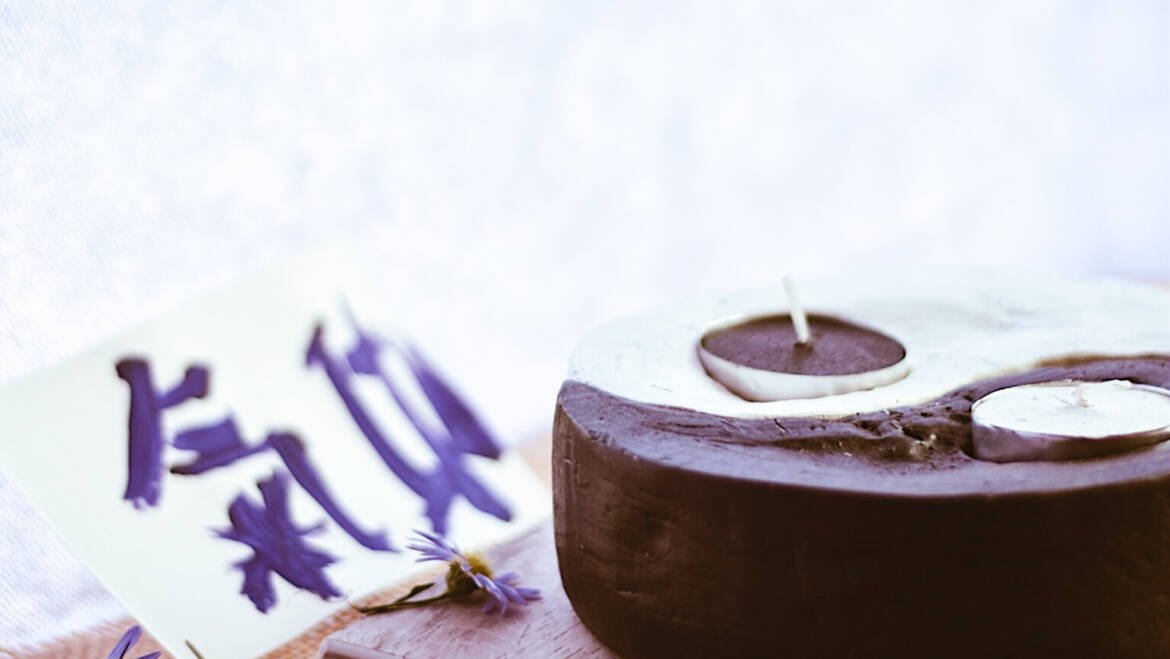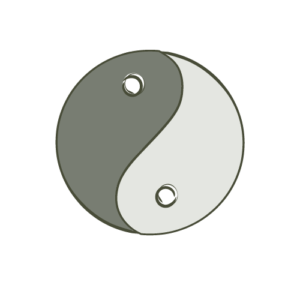«Equilibrio y Armonía: Descubre el Poder del Yīn Yáng en la Medicina Tradicional China»
The Yīn Yáng 阴 阳 is a fundamental concept that represents harmony and balance in all aspects of the universe.
In Chinese medicineit is understood that yīn and yáng are two complementary and interdependent forces. Although they may appear to be opposites, they are actually in constant balance and need each other to exist. Therefore, it is understood that in the yīn there is yáng and in the yáng there is yīn.
It is important to note that when one of these aspects is in excess, the other decreases.
The Yīn Yáng theory also maintains that everything in the universe is in constant transformation, nothing remains static.
What is Yīn 阴 energy?.
Yīn refers to intuitive and wise energy, it represents the internal guidance of each individual and their deepest aspect.
This energy is characterized by concepts such as empathy, the ability to work as a team, the ability to multitask, the willingness to be inclusive, as well as being hesitant and perfectionist. In cerebral terms, it is related to the left hemisphere.
Yīn energy is communicated through dreams, emotions and changes. It is associated with the capacity to love, sensitivity, emotionality, affection, tenderness, generosity, understanding, collaboration and forgiveness.
What is Yáng 阳 energy?
Yang energy is what drives action and the ability to get things done.
It represents construction, movement, the ability to speak and move.
Yang is strength, courage and determination. It is related to the right cerebral hemisphere.
This energy is associated with rationality, strength, decision making, the ability to set limits, sexuality, perseverance, a sense of reality, practicality, personal power and quick decision making.
Relationship of the organs with the Yīn Yáng
Traditional Chinese medicine considers Yīn Yáng duality to apply to various aspects of life and nature, including the human body. Every organ, tissue and bodily function has a Yīn Yáng nature Yīn Yáng se aplica a diversos aspectos de la vida y la naturaleza, incluyendo el cuerpo humano. Cada órgano, tejido y función corporal tiene una naturaleza Yīn o Yáng.
The Yīn organs and the Yáng organs are considered part of a system of balance and complementarity.
Below, you can see how the Yin and Yang organs are related according to Chinese medicine:
Yīn Organs:
- Heart: Controla la circulación sanguínea y alberga el «Shen» (espíritu).
- Lungs: They govern respiration and the exchange of oxygen and carbon dioxide.
- Kidneys: They regulate fluid balance and control reproduction, growth and development.
- Liver: Stores and distributes blood, regulates the flow of Qi (energy), and controls emotions.
- Spleen: Controls the transformation and transportation of food and the production of Qi and blood.
Yang Organs:
- Small Intestine: It is responsible for the absorption and transport of nutrients.
- Large Intestine: Eliminates solid waste and helps in water reabsorption.
- Stomach: Receives and breaks down food for subsequent digestion.
- Bladder: Stores and eliminates urine.
- Gallbladder: Stores and secretes bile to aid in the digestion of fats.
- Triple heater: Helps in the circulation of body fluids and regulates metabolism.
It is important to note that these Yin and Yang organs do not exclusively refer to anatomical organs, but rather represent functional and energetic aspects in traditional Chinese medicine.
The balance between Yīn and Yáng is essential for health and well-being.
The imbalance between these two forces can lead to diseases and disorders. The goal is to harmonize and balance these opposing forces through various practices, such as acupuncture, herbal medicine, proper nutrition, meditation and physical activity, to promote health and prevent disease.
It is important to note that Yīn Yang is not limited only to the physical aspect, but also applies to emotions, thoughts, seasons of the year and natural cycles.
Why is it important to know the concept of Yīn Yáng 阴阳?
By knowing these concepts you can also understand the behaviors associated with Yīn Yáng, since this opens the diagnostic perspective to know yourself and choose what is consistent with your own well-being. At the same time, it gives diagnostic points to oriental doctors for effective treatment, whether preventive or pathological.
Behaviors Yīn 阴
Yīn behaviors tend to be more passive, introspective and introverted.
They are characterized by slowness, intolerance to cold, sensitivity, relaxation, imagination, contemplative thinking and sadness.
Comportamientos Yáng 阳
On the other hand, yang behaviors are more active, energetic, and focused on production.
They are marked by movement, speed, joy and extroversion.
Food and Yīn Yáng
yang foods
These foods are associated with the fire element, they tend to generate heat and invigorate.
Some examples of yang foods are: cinnamon, eggs, beef, caffeine, chicken, garlic, onion, peanuts, salmon, sweet potato, wheat, and pumpkin.
Yīn foods
Yīn foods are associated with the water element, which are more refreshing. These foods are especially suitable for hot climates and people who experience excessive heat and sweating.
Some examples of yīn foods are: apples, pears, bananas, beans, broccoli, cauliflower, grapes, honey, lettuce, mushrooms, spinach, yogurt, watermelon, and celery.
Why is Yīn Yáng related to Eastern Medicine?
El taoísmo, una antigua tradición filosófica que se basa en la idea del «Tao». Este representa la fuerza cósmica y primordial que subyace a todas las cosas.
It was within the framework of Taoism that the concept of Yīn Yáng was developed.
The Taoists, observing nature, recognized that the universe is composed of two opposite but complementary forces.
This concept was applied in various fields, including Traditional Chinese Medicine.
Chinese doctors observed that the human body also exhibited Yin and Yang characteristics.
As we mentioned previously, each organ and bodily function was associated with a specific Yīn or Yáng nature. Maintaining balance between these two opposing forces was essential for health and well-being.
In Oriental Medicine, a more complete theory of Yīn Yáng was developed. Imbalances between Yīn and Yáng were understood to be related to pathologies and disorders.
In Taoism influenced Chinese medicine by emphasizing the importance of harmony and balance. In turn, Chinese medicine provided Taoism with a practical framework to apply its philosophical principles in the field of health.
This mutual interaction has strengthened the relationship between Yīn Yáng and Chinese medicine over time.
This is how Taoism provided the philosophical context for the development of the Yīn Yáng concept, while Chinese medicine adopted it and applied it in the understanding and treatment of beings from a comprehensive perspective.
This relationship has been fundamental in the practice of Oriental Medicine and has influenced Chinese culture for centuries.
For more information you can follow us on Instagram here



Add Comment